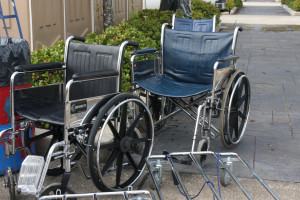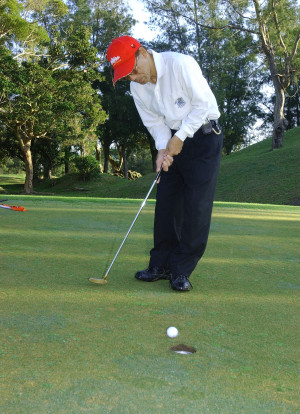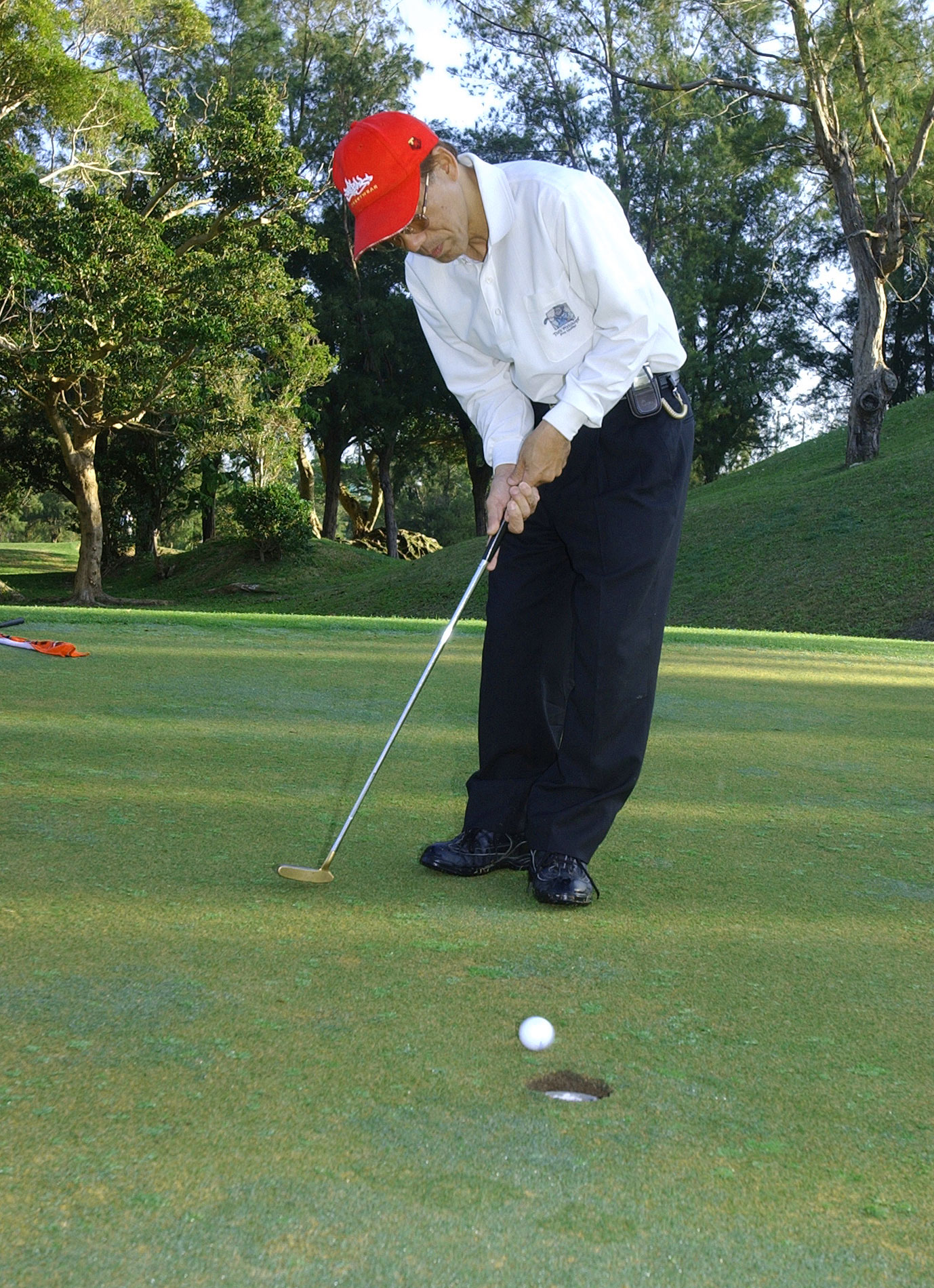A Neurosurgeon with a Painful Arm, Myositis from Statin and PPI Drugs
by Jeffrey Dach MD
Sam, a 67 year old retired neurosurgeon came to see me because of pain and weakness in his right arm over the past 6 months. The pain and weakness is chronic and so severe, that he has given up Golf, his favorite pastime. His medical history is unremarkable except for his medications which includes a statin drug to lower cholesterol, simvastatin, which he has been taking for three years, and Prilosec a proton pump inhibitor (PPI) acid blocking drug for the past year for symptoms of heart burn.
Examination
Upon examination, there is diffuse tenderness of the muscles of the right shoulder and arm, as well as generalized muscle wasting.
Lab studies revealed extensive vitamin and mineral deficiencies suggesting malabsorption, B12 was low at 337 . There was a very low cholesterol level of 146.
Diagnosis
My diagnosis was drug induced myositis from the combination of statin drug and proton pump inhibitor acid blocking drug.(1-9) I advised the retired Neurosurgeon to stop these drugs and to take vitamin and mineral supplements to allow the muscles to heal.
Disagreement
Sam’s cardiologist and gasteroenterologist disagreed with my assessment and objected to the idea of stopping the drugs. They told Sam that these were “lifesaving drugs”. and were unlikely to be related to the muscle problems, and to continue them. In addition, Sam didn’t need any vitamins, as he was getting all his vitamins from his diet. Sam relayed this information to me on the phone. He thanked me for seeing him, but he would follow the advice of his other doctors, the cardiologist and the gasteroenterologist. These were his old friends he had known for years. He trusted them.
Deterioration
 Tragically, Sam’s trust was misplaced. Six months later, Sam’s wife called me to ask if anything could done for Sam. He was still on the statin anti-cholesterol drugs, as well as the acid blocking drug ( PPI), and Sam’s condition had deteriorated to the point he was now too weak to walk, and was confined to a wheel chair in a nursing home, In addition, Sam showed signs of early dementia.
Tragically, Sam’s trust was misplaced. Six months later, Sam’s wife called me to ask if anything could done for Sam. He was still on the statin anti-cholesterol drugs, as well as the acid blocking drug ( PPI), and Sam’s condition had deteriorated to the point he was now too weak to walk, and was confined to a wheel chair in a nursing home, In addition, Sam showed signs of early dementia.
Conclusion
Unfortunately, this tragic story of deterioration could have been prevented. Myopathy and myositis are well known adverse effects of statin drugs (intended to lower cholesterol).(1-9) However, statins also lower CoQ-10 levels and serve as mitochondrial toxins causing myopathy and dementia. The PPI drugs are also known to cause myopathy, thought to be caused by protein, mineral and vitamin malabsorption from lack of stomach acid.(1-9)
Articles with Related Interest:
Hair Loss from Low Stomach Acid, the Lady in Grey
Antacids Associated with B12 Deficiency
Links and References
Myopathy caused by proton pump inhibitors and statins
1) http://www.ncbi.nlm.nih.gov/
Eur J Clin Pharmacol. 2006 Jun;62(6):473-9. Epub 2006 Apr 22.
Myopathy including polymyositis: a likely class adverse effect of proton pump inhibitors? Clark DW, Strandell J.Department of Pharmacology and Toxicology, School of Medical Sciences, University of Otago, PO Box 913, Dunedin, New Zealand.
Polymyositis occurring in patients treated with omeprazole has been signalled as a possible adverse drug reaction (ADR) by the New Zealand Intensive Medicines Monitoring Programme (IMMP) and the WHO Collaborating Centre for International Drug Monitoring: the Uppsala Monitoring Centre (UMC). Polymyositis and other myopathies have also been reported in post-marketing data and in the medical literature in association with proton pump inhibitor (PPI) use. We wished to follow-up these signals and investigate the evidence of causality for the association of polymyositis and other myopathy with PPI use.
METHODS: Spontaneously reported ADRs from national monitoring centres are sent to the WHO ADR database (VigiBase). VigiBase was searched for case reports of the PPIs, omeprazole, pantoprazole, lansoprazole, esomeprazole and rabeprazole, with terms indicative of myopathy, and further information was elicited from the national centres to help establish causality. Literature sources were reviewed for the occurrence of the above terms in combination with PPIs.
RESULTS: In total, there were 292 reports of various myopathies with PPIs, excluding 868 cases of ‘myalgia’. In this analysis, 69 patients recovered when the drug was withdrawn and, in 15 patients, the reaction re-occurred when the drug was reinstated. In one-third of the 292 cases, the PPI was the single administered drug, and the PPI was the single suspected drug by the reporter in 57% of reports where concomitant medication was used. In this analysis, three index cases are documented. One involves the same patient taking three different PPIs (lansoprazole, esomeprazole and rabeprazole) at different time periods, with myalgia and muscle weakness occurring with all three drugs. In the two other index cases, myopathies with esomeprazole and omeprazole were reported with positive rechallenge, and causality was assessed as ‘possible’ and ‘certain’ by the reporting centres. In 27 cases myositis or polymyositis was reported. Other myopathies were reported, including 35 cases with rhabdomyolysis. In 9 of these cases, the PPI was withdrawn and the reaction abated. The PPI was reinstated in one patient, but the reaction did not re-occur. Time to onset was given in 17 of the rhabdomyolysis cases, rhabdomyolysis occurred with the first week in 9 cases, and in 3 cases the reaction occurred between 14 days to 3 months of treatment. In 12 of these patients, an HMG-CoA reductase inhibitor (statin) was taken concomitantly.
CONCLUSION: Case reports from the WHO ADR database, including index cases involving four out of five PPIs, along with evidence of a possible mechanism, provide compelling evidence that there is a causal association between members of the PPI drug class and myopathy including polymyositis. Evidence was also obtained to support the view that PPI use may be associated with occurrence of other myopathies, including the serious reaction rhabdomyolysis.
statin induced myopathy
2) http://www.ncbi.nlm.nih.gov/
JAMA. 2003 Apr 2;289(13):1681-90.
Statin-associated myopathy. Thompson PD, Clarkson P, Karas RH.Preventive Cardiology and Cardiovascular Research, Division of Cardiology, Hartford Hospital, Hartford, Conn 06102, USA.
Statins (3-hydroxy-3-methylglutaryl coenzyme A reductase inhibitors) are associated with skeletal muscle complaints, including clinically important myositis and rhabdomyolysis, mild serum creatine kinase (CK) elevations, myalgia with and without elevated CK levels, muscle weakness, muscle cramps, and persistent myalgia and CK elevations after statin withdrawal. We performed a literature review to provide a clinical summary of statin-associated myopathy and discuss possible mediating mechanisms. We also update the US Food and Drug Administration (FDA) reports on statin-associated rhabdomyolysis. Articles on statin myopathy were identified via a PubMed search through November 2002 and articles on statin clinical trials, case series, and review articles were identified via a PubMed search through January 2003. Adverse event reports of statin-associated rhabdomyolysis were also collected from the FDA MEDWATCH database. The literature review found that reports of muscle problems during statin clinical trials are extremely rare. The FDA MEDWATCH Reporting System lists 3339 cases of statin-associated rhabdomyolysis reported between January 1, 1990, and March 31, 2002. Cerivastatin was the most commonly implicated statin. Few data are available regarding the frequency of less-serious events such as muscle pain and weakness, which may affect 1% to 5% of patients. The risk of rhabdomyolysis and other adverse effects with statin use can be exacerbated by several factors, including compromised hepatic and renal function, hypothyroidism, diabetes, and concomitant medications. Medications such as the fibrate gemfibrozil alter statin metabolism and increase statin plasma concentration. How statins injure skeletal muscle is not clear, although recent evidence suggests that statins reduce the production of small regulatory proteins that are important for myocyte maintenance.
===================
3) http://www.ncbi.nlm.nih.gov/
Eur J Intern Med. 2012 Jun;23(4):317-24.
Statin induced myotoxicity. Sathasivam S. The Walton Centre NHS Foundation Trust, Lower Lane, Liverpool L9 7LJ, United Kingdom.
Statins are an effective treatment for the prevention of cardiovascular diseases and used extensively worldwide. However, myotoxicity induced by statins is a common adverse event and a major barrier to maximising cardiovascular risk reduction. The clinical spectrum of statin induced myotoxicity includes asymptomatic rise in creatine kinase concentration, myalgia, myositis and rhabdomyolysis. In certain cases, the cessation of statin therapy does not result in the resolution of muscular symptoms or the normalization of creatine kinase, raising the possibility of necrotizing autoimmune myopathy. There is increasing understanding and recognition of the pathophysiology and risk factors of statin induced myotoxicity. Careful history and physical examination in conjunction with selected investigations such as creatine kinase measurement, electromyography and muscle biopsy in appropriate clinical scenario help diagnose the condition. The management of statin induced myotoxicity involves statin cessation, the use of alternative lipid lowering agents or treatment regimes, and in the case of necrotizing autoimmune myopathy, immunosuppression.
4) http://www.ncbi.nlm.nih.gov/
Atherosclerosis. 2012 May;222(1):15-21.
Statins as a possible cause of inflammatory and necrotizing myopathies. Padala S, Thompson PD.
Department of Internal Medicine, University of Connecticut, Farmington, CT 06030, USA.
Hydroxy-methyl-glutaryl Co-A reductase (HMGCR) inhibitors or statins are a well recognized cause of a variety of skeletal myopathic effects which generally resolve on stopping the medication. Recent reports, however, suggest that statins are associated with a unique autoimmune myopathy wherein symptoms persist or even progress after statin discontinuation and require immunosuppressive therapy. We performed a systematic review to examine the association of statins with inflammatory (dermatomyositis/polymyositis) and necrotizing myopathies.
METHODS: We searched PubMed, Ovid and Scopus for English language articles addressing statin associated inflammatory and necrotizing myopathies. Given the paucity of cases, we extended the search to include articles in all languages.
RESULTS: The search yielded 14 articles reporting a possible association of statins with inflammatory myopathies describing 10 cases of polymyositis and 14 cases of dermatomyositis, and 4 articles reporting a possible association of statins with necrotizing myopathies describing 63 cases. One study identified a unique antibody directed against HMGCR in patients with necrotizing myopathy. Systemic immunosuppressive therapy was required in majority of these cases for resolution of symptoms.
CONCLUSION: Statins have recently been associated with a variety of inflammatory myopathies including polymyositis, dermatomyositis, and a necrotizing myopathy. The association of statins with necrotizing myopathy is strengthened by the discovery that the serum of some of these patients contains an anti-HMGCR antibody. This suggests that statins can cause or unmask an immune mediated myopathy.
5) http://www.if-pan.krakow.pl/
Pharmacol Rep. 2011;63(4):859-66.
Statin-induced myopathies. Tomaszewski M, Stępień KM, Tomaszewska J, Czuczwar SJ.
Source Department of Cardiology, Medical University of Lublin, Jaczewskiego 8, PL 20-954 Lublin, Poland.
Statins are considered to be safe, well tolerated and the most efficient drugs for the treatment of hypercholesterolemia, one of the main risk factor for atherosclerosis, and therefore they are frequently prescribed medications. The most severe adverse effect of statins is myotoxicity, in the form of myopathy, myalgia, myositis or rhabdomyolysis. Clinical trials commonly define statin toxicity as myalgia or muscle weakness with creatine kinase (CK) levels greater than 10 times the normal upper limit. Rhabdomyolysis is the most severe adverse effect of statins, which may result in acute renal failure, disseminated intravascular coagulation and death. The exact pathophysiology of statin-induced myopathy is not fully known. Multiple pathophysiological mechanisms may contribute to statin myotoxicity. This review focuses on a number of them. The prevention of statin-related myopathy involves using the lowest statin dose required to achieve therapeutic goals and avoiding polytherapy with drugs known to increase systemic exposure and myopathy risk. Currently, the only effective treatment of statin-induced myopathy is the discontinuation of statin use in patients affected by muscle aches, pains and elevated CK levels.
Free full text
6) http://www.ncbi.nlm.nih.gov/
Phys Ther. 2010 Oct;90(10):1530-42.
Effects of statins on skeletal muscle: a perspective for physical therapists.Di Stasi SL, MacLeod TD, Winters JD, Binder-Macleod SA.SourceUniversity of Delaware, Newark, Delaware, USA.
Hyperlipidemia, also known as high blood cholesterol, is a cardiovascular health risk that affects more than one third of adults in the United States. Statins are commonly prescribed and successful lipid-lowering medications that reduce the risks associated with cardiovascular disease. The side effects most commonly associated with statin use involve muscle cramping, soreness, fatigue, weakness, and, in rare cases, rapid muscle breakdown that can lead to death. Often, these side effects can become apparent during or after strenuous bouts of exercise. Although the mechanisms by which statins affect muscle performance are not entirely understood, recent research has identified some common causative factors. As musculoskeletal and exercise specialists, physical therapists have a unique opportunity to identify adverse effects related to statin use. The purposes of this perspective article are: (1) to review the metabolism and mechanisms of actions of statins, (2) to discuss the effects of statins on skeletal muscle function, (3) to detail the clinical presentation of statin-induced myopathies, (4) to outline the testing used to diagnose statin-induced myopathies, and (5) to introduce a role for the physical therapist for the screening and detection of suspected statin-induced skeletal muscle myopathy.
7) http://www.ccjm.org/content/
Statin myopathy: A common dilemma not reflected in clinical trials Cleveland Clinic Journal of Medicine June 2011 vol. 78 6 393-403 GENARO FERNANDEZ, MD ERICA S. SPATZ, MD CHARLES JABLECKI, MD Department of Neurosciences, University of California San Diego, La Jolla PAUL S. PHILLIPS, MD⇓ Director, Interventional Cardiology, Department of Cardiology, Scripps Mercy Hospital, San Diego, CA
myopathy and muscle pain while on the combined treatment of atorvastatin plus ezetimibe.
8) http://www.ncbi.nlm.nih.gov/
Can J Cardiol. 2006 February; 22(2): 141–144.
Ezetimibe-associated myopathy in monotherapy and in combination with a 3-hydroxy-3-methylglutaryl coenzyme A reductase inhibitor Chantale Simard, B Pharm, PhD, and Paul Poirier, MD PhD FRCPC FACC
Centre de recherche, Hôpital Laval; Faculté de Pharmacie, Université Laval, Sainte-Foy, Québec
Correspondence: Dr Chantale Simard, Centre de recherche, Hôpital Laval, 2725 chemin Sainte-Foy, Sainte-Foy, Québec
9) http://www.ncbi.nlm.nih.gov/
Ann Rheum Dis. 2008 May;67(5):614-9.
Increased exposure to statins in patients developing chronic muscle diseases: a 2-year retrospective study.Sailler L, Pereira C, Bagheri A, Uro-Coste E, Roussel B, Adoue D, Fournie B, Laroche M, Zabraniecki L, Cintas P, Arlet P, Lapeyre-Mestre M, Montastruc JL.Unit of Pharmacoepidemiology, EA 3696, Clinical Pharmacology Department, Paul Sabatier University, 37 Allées Jules Guesdes, 31000 Toulouse, France.
Case reports have suggested that lipid-lowering drugs (LLDs), especially statins, could induce or reveal chronic muscle diseases. We conducted a study to evaluate the association between chronic muscle diseases and prior exposure to LLDs.METHOD:This was a retrospective study of chronic primary muscle disease cases newly diagnosed at the Toulouse University Hospitals between January 2003 and December 2004 among patients living in the Midi-Pyrénées area, France. All patients remained symptomatic for more than 1 year after drug withdrawal, or required drugs for inflammatory myopathy. Data on the patient’s exposure to LLDs and to other drugs were compared with that of matched controls (5/1) selected through the Midi-Pyrénées Health Insurance System database.RESULTS:A total of 37 patients were included in the study. Of those, 21 (56.8%) suffered from dermatomyositis (DM) or polymyositis (PM), 12 (32.4%) from genetic myopathy, and 4 (10.8%) from an unclassified disease. The prevalence of exposure to statins was 40.5% in patients and 20% in controls (odds ratio (OR) 2.73, 95% confidence interval (CI) 1.21-6.14; p<0.01). There was a significant positive interaction between statins and proton pump inhibitors exposure (weighted OR 3.3, 95% CI 1.37-7.54; p = 0.02). Statin exposure rate was 47.6% among patients with DM/PM (OR 3.86, 95% CI 1.30-11.57; p<0.01). There was no difference between patients and controls for exposure to fibrates.CONCLUSION:Patients who developed chronic muscle diseases after the age of 50, including DM/PM, had a higher than expected frequency of prior exposure to statins. Further studies are needed to confirm this association and the role of proton pump inhibitors.
Jeffrey Dach MD
7450 Griffin Road, Suite 190
Davie, Fl 33314
954-792-4663
www.jeffreydach.com
www.drdach.com
www.naturalmedicine101.com
www.bioidenticalhormones101.com
www.truemedmd.com
www.bioidenticalmds.com
Click Here for: Dr Dach’s Online Store for Pure Encapsulations Supplements
Click Here for: Dr Dach’s Online Store for Nature’s Sunshine Supplements
Web Sites and Discussion Board Links:
jdach1.typepad.com/blog/
disc.yourwebapps.com/Indices/244124.html
disc.yourwebapps.com/Indices/244066.html
disc.yourwebapps.com/Indices/244067.html
disc.yourwebapps.com/Indices/244161.html
disc.yourwebapps.com/Indices/244163.html
disc.yourwebapps.com/Indices/244163.html
health-forums.1
health-forums.2
Disclaimer click here: www.drdach.com/wst_page20.html
The reader is advised to discuss the comments on these pages with his/her personal physicians and to only act upon the advice of his/her personal physician. Also note that concerning an answer which appears as an electronically posted question, I am NOT creating a physician — patient relationship. Although identities will remain confidential as much as possible, as I can not control the media, I can not take responsibility for any breaches of confidentiality that may occur.
Link to this article:http://wp.me/p3gFbV-t
Copyright (c) 2013 Jeffrey Dach MD All Rights Reserved. This article may be reproduced on the internet without permission, provided there is a link to this page and proper credit is given.
FAIR USE NOTICE: This site contains copyrighted material the use of which has not always been specifically authorized by the copyright owner. We are making such material available in our efforts to advance understanding of issues of significance. We believe this constitutes a ‘fair use’ of any such copyrighted material as provided for in section 107 of the US Copyright Law. In accordance with Title 17 U.S.C. Section 107, the material on this site is distributed without profit to those who have expressed a prior interest in receiving the included information for research and educational purposes.











Leave a Comment
You must be logged in to post a comment.